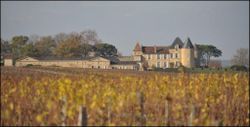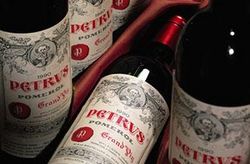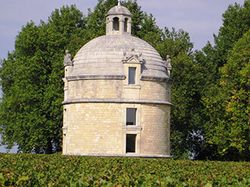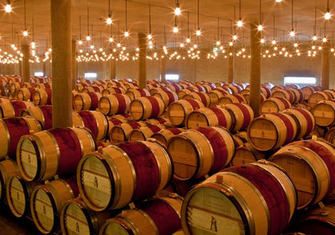
The general industry opinion is that 2017 is a varied vintage, with none of the top critics awarding the perfect 100 points. Neal Martin’s highest score awarded was 97 points, scores over that are very rare. Overall, Martin rates the vintage as “good to very good” but not in the same league as 2015 or ’16 and he likens it more to the mid-vintage 2014.
His top 2017 wines all scored 95 – 97 points and are noted as Lafleur, which he describes as “an awesome 2017”, Lafite Rothschild – “classic from start to finish” and Eglise Clinet. White wines have performed relatively well and Sauternes’ Yquem and Doisy-Daene have received equal top scores of 95 – 97 points.
Martin comments on the market’s view of the vintage, and states that the Bordeaux 2017 en primeur campaign success will ride on the pricing strategies on release, those wines priced to sell through to the end consumer will be the vintage winners.
James Suckling has categorised 2017 as an average, ‘Mid-Quality’ vintage, stating that the “top wines of the vintage should add to the reputation of this unique year”. Yquem and Latour stand out as his top two wines, both awarded 98-99 points. He describes First Growth Chateau Latour as “Superb. Classic great Bordeaux. Wow.” But as Latour exited the en primeur system six years ago we won’t expect to see Latour 2017 hit the market for a number of years.

Yquem stable mate, Chateau Cheval Blanc, also owned by LVMH, was scored at 97 – 98 and was the only St Emilion Grand Cru Classe A to be rated this highly by him. St Emilion was also particularly hard hit by the frosts in 2017.
Antonio Galloni, founder of Vinous.com acknowledges in his critique that the effects of the frosts last Spring were “clearly severe and debilitating for a number of estates”. His over-riding view on the vintage is that “2017 is, in my opinion, very clearly a Right Bank vintage” and the best of St Emilion and Pomerol “are positively thrilling” listing seven of the top ten wines of the vintage from these two appellations.
Galloni’s Left Bank favourites include Haut Brion, Leoville Las Cases and Montrose, all of which are “more sensual than they usually are at this stage” but he states that the Left Bank does not possess too many “ extraordinary or absolute must haves” this vintage.
The Liv-ex member merchants voted on their top five wines of 2017 as Petrus, Vieux Chateau Certan, Margaux, Latour and Lafleur with 14% of those surveyed claiming Petrus as wine of the vintage. Overall they rated the vintage as a whole “better than expected” given the frost damage. The survey also showed that merchants expect overall euro release prices to be on average 11.5% lower than the 2016 vintage release, with less demand for 2017.

INVESTING IN BORDEAUX EN PRIMEURS
Fundamentally, buying wine ‘en primeur’ is akin to investing in futures. The rationale being that an allocation of fine wine bought 2 to 3 years before it becomes physically available in the market should mean that the wine is bought at the cheapest possible price. Historically, this was very much the case, however the pricing strategies of vintage releases, particularly since the 2010 vintage came to market in Spring 2011, delivered a series of negative returns. In-bottle release prices, on average, ended up being cheaper than the original en primeur prices. As a consequence the market came to expect a better rate of return from acquiring wines already in the secondary market rather than buying at first release.
The system really woke up to this in 2014 and more recent campaigns of the 2015 and ’16 vintages have seen some redress by the Chateaux and the Bordeaux negociants. Returns from these more recent campaigns have been mostly positive and some confidence is returning to the system.
Being strategically selective with En Primeurs is the key to picking ‘winning futures’. Looking at the 2015 vintage performance, the latest to be physically released into the market last year, the average return was 11%, however individual wine performance (in the Bordeaux 500 range) varied between -17% to 162%.
RELEASE UPDATE:
The chateaux themselves are also reviewing their En Primeur quantity release strategy. Chateau Latour took the unprecedented step of removing their entire production from the Bordeaux en primeur system in 2012, with 2011 the last vintage released en primeur. The First Growth Chateau released 4,000 cases of its 2006 vintage onto the market in April this year, representing 40% of normal annual production, at a premium of about 16% to cases already on the secondary market.

Other chateaux are now reducing their initial release volume of En Primeur wine with the aim of securing higher vintage returns and, given the significantly reduced supply of the 2017 vintage, we may see this strategy being adopted further this year.
It’s also worth noting that there is generally a marked difference between the opening prices of ‘Prime’ and ‘Off vintages. For example, the average release prices of ‘Off’ vintages 2007 and 2013 were less than half the price of the ‘On’ vintages 2009 and 2010. 2017 has been scored as a ‘Mid’ quality vintage, most closely comparable to 2014, however its average vintage score is slightly lower.
In terms of identifying those wines that offer the most potential for strong returns we are looking at the correlation between quality scores and prices of the new releases compared to back vintages on the secondary market.
The 2017 releases are now coming through on a daily basis, the key ones of interest to us so far are:
Chateau Palmer – first off the starting blocks with a discount to its 2016 release price.
Beychevelle – priced it right with its first release, at 4% discount on 2016 and the lowest Beychevelle vintage on the market, it reportedly sold out instantly.
Lafleur 2017 – rated one of the top wines of the vintage, (Lisa Perotti-Brown scoring it 97 – 100 points, Neal Martin 95 – 97 points and Galloni claiming it to be “without question one of the wines of the vintage on the Right Bank”) released at 3.5% above its 2016 price.
Carruades Lafite 2017 released at around £1,650 a case London prices, which is very good, BUT allocations from Bordeaux WILL be tied to Rieussec by negociants and potentially to other wines within the Lafite stable, which may make the maths less attractive.
Lynch Bages 2017, down 21% on 2016, more costly than the 2014 with which it shares a score, but a reasonably priced release.
Interestingly Stephanie de Bouard-Rivoal, CEO of Chateau Angelus, has publicly stated that they are reviewing their global supply chain with a resolve to tighten up its global distribution to make it more efficient. The St Emilion Grand Cru Classe A estate intends to hold back 40 to 50 per cent of its 2017 production.
The market generally has had a muted appetite for 2017 so far, which as a result has ‘upped the ante’ on the secondary market for back vintages. Very few 2017 wines first releases have sold out, there is a huge gap between the price buyers are prepared to pay and the chateaux’ expectations on sales’ prices, which currently stand at a premium to the 2014 benchmark vintage prices.
Meanwhile, the trade has just returned from Vinexpo Hong Kong where buoyant sales has probably left coffers light for En Primeur purchases unless they are priced just right.
At the end of May 2018, the Liv-ex100 was at a 6 months’ high and the Liv-ex 500 at an all-time high. Liv-ex comments that these conditions may also add to the chateaux’s current resolve to hold back supply for better margins later.
We are monitoring the releases as they happen and will provide you with details of those we feel offer the best opportunity for growth. For more information, read our latest Fine Wine Investment Market Report
CALL us now on 0203 384 2262

